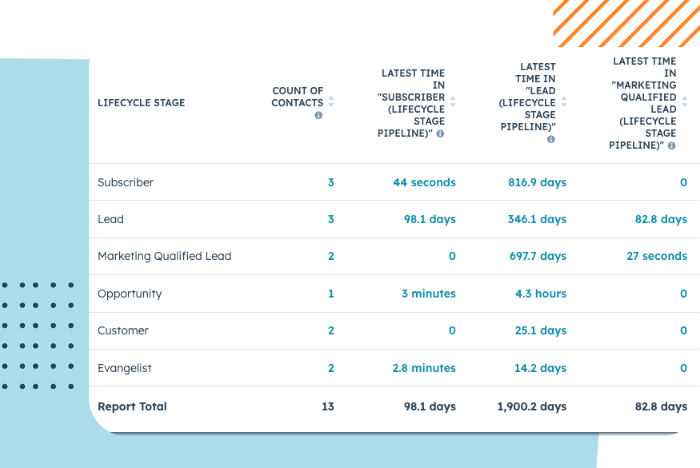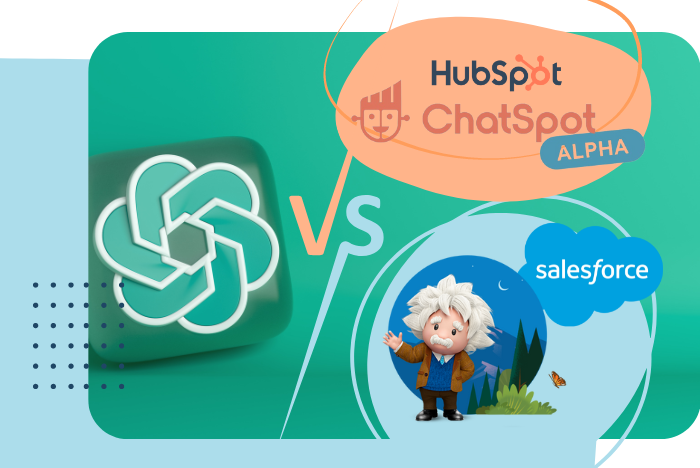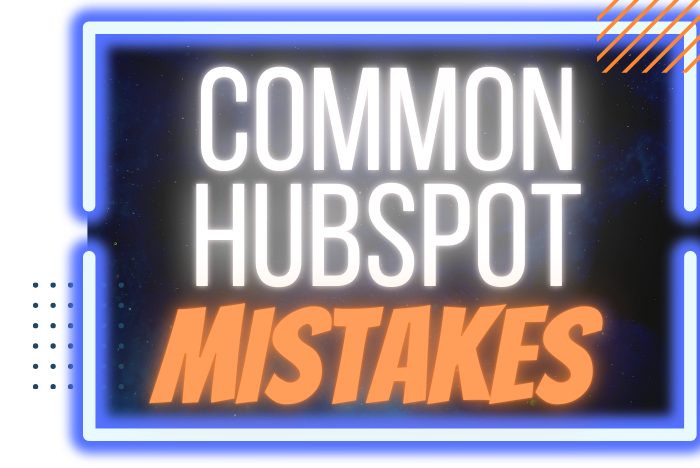HubSpot provides a robust CRM platform that helps businesses track, nurture, and convert leads through its well-defined Lead Stages, Lifecycle Stages, and Deal Stages. Understanding how these stages work together can significantly enhance your lead management strategy, improve sales efficiency, and ultimately drive more conversions. By the end of this article, you'll understand each stage, their interplay, and best practices for leveraging HubSpot to its fullest potential.
What are HubSpot Lifecycle Stages?
Lifecycle stages in HubSpot categorize contacts based on their progression through the buyer's journey. These stages help in tracking where a contact stands in relation to your business, from the initial touchpoint to becoming a loyal customer. HubSpot provides eight default lifecycle stages:
- Subscriber: Contacts who have opted to receive updates, such as blog subscriptions or newsletters. This stage is typically the first interaction a potential lead has with your business.
- Lead: Contacts or companies that have shown interest beyond the initial subscription, usually through a lead generation form. They have provided enough information to be recognized as potential customers.
- Marketing Qualified Lead (MQL): Contacts deemed ready for sales outreach based on specific marketing criteria, such as engagement with marketing materials or filling out a key form.
- Sales Qualified Lead (SQL): Contacts vetted by the sales team as a potential customer. This stage indicates a higher likelihood of conversion based on further qualification by sales.
- Opportunity: Contacts associated with a potential deal in your CRM. This stage is critical as it transitions the lead from qualification to active pursuit by the sales team.
- Customer: Contacts who have completed at least one purchase. This stage represents the successful conversion of a lead into a paying customer.
- Evangelist: Satisfied customers who advocate for your brand. They can significantly influence new leads through positive word-of-mouth and testimonials.
- Other: Contacts that do not fit into the other categories, such as partners, vendors, or employees. This stage helps in managing non-sales-related contacts.
Understanding Lead Status
Lead status provides a granular view of the actions taken by the sales team within the lifecycle stages, particularly within the SQL stage. It offers detailed insights into the current state of the lead and the sales activities performed. HubSpot’s default lead statuses include:
- New: Recently identified leads who have not yet been contacted..
- Open: Leads currently being worked on by the sales team.
- In Progress: Ongoing engagement with the lead, such as follow-up calls or emails.
- Open Deal: Leads that have moved into the deal pipeline.
- Unqualified: Leads that do not meet the qualification criteria for further pursuit.
- Attempted to Contact: Initial outreach attempts are being made.
- Connected: Successful contact has been made with the lead.
- Bad Timing: Leads that are not ready to engage at this moment but may be viable in the future.
Custom lead statuses can also be created to fit the unique needs of your business. Properly utilizing lead statuses helps sales teams prioritize their efforts and ensures no lead falls through the cracks.
Exploring Deal Stages
Deal stages represent the steps in your sales process and are mapped out within your CRM pipeline. Each stage in the deal pipeline corresponds to a specific action or milestone in the sales journey. Typical deal stages include:
- Appointment Scheduled: Initial meeting or demo has been arranged.
- Qualified to Buy: The lead has been vetted and qualified by the sales team.
- Presentation Scheduled: A formal presentation or proposal is planned.
- Decision Maker Bought-In: Key stakeholders are involved and show interest.
- Contract Sent: The deal is in the final negotiation phase.
- Closed Won: The deal has been successfully completed.
- Closed Lost: The deal was not successful.
Custom deal stages can be tailored to fit the unique steps of your sales process. These stages help in forecasting sales, managing pipelines, and understanding where each deal stands at any given time.
Integrating Lifecycle Stages, Lead Status, and Deal Stages
To maximize the efficiency of your sales and marketing efforts, it's crucial to integrate and align lifecycle stages, lead statuses, and deal stages. Here’s how they work together:
-
Lifecycle Stages and Lead Status: Lifecycle stages provide a high-level overview of where a contact is in the buyer's journey, while lead statuses give detailed insights into sales activities within those stages. For example, a contact may be an MQL in the lifecycle stage but have a lead status of "Attempting to Contact," indicating that sales outreach is in progress.
-
Lifecycle Stages and Deal Stages: When a lead progresses to an opportunity, the lifecycle stage changes to "Opportunity," and the deal is tracked through the various deal stages. This integration ensures seamless handoffs between marketing and sales and provides clarity on the status of potential deals.
-
Automation and Workflows: HubSpot allows for the automation of these stages and statuses through workflows. For example, when a contact fills out a form requesting a demo, their lifecycle stage can automatically change to MQL, and a workflow can notify the sales team to follow up. Similarly, when a deal is closed, the lifecycle stage can update to "Customer" automatically.
Best Practices for Using HubSpot Stages
1. Clear Definitions: Ensure that your team has clear, documented definitions for each lifecycle stage, lead status, and deal stage. This alignment prevents confusion and ensures consistency.
2. Regular Updates: Keep lifecycle stages, lead statuses, and deal stages up to date. Regularly review and update these properties to reflect the latest interactions and engagements.
3. Automate Processes: Leverage HubSpot’s automation capabilities to update stages and statuses based on specific actions. This reduces manual work and ensures timely updates.
4. Align Marketing and Sales: Foster strong collaboration between marketing and sales teams. Regular meetings and shared KPIs can help ensure both teams are aligned in their definitions and processes.
Saas says
Understanding and effectively utilizing HubSpot’s lifecycle stages, lead statuses, and deal stages is crucial for optimizing your sales and marketing efforts. By integrating these tools, you can gain valuable insights into your customer journey, improve lead management, and ultimately drive more successful sales outcomes. Use the provided best practices to ensure a seamless and efficient process, enhancing your ability to convert leads into loyal customers.




